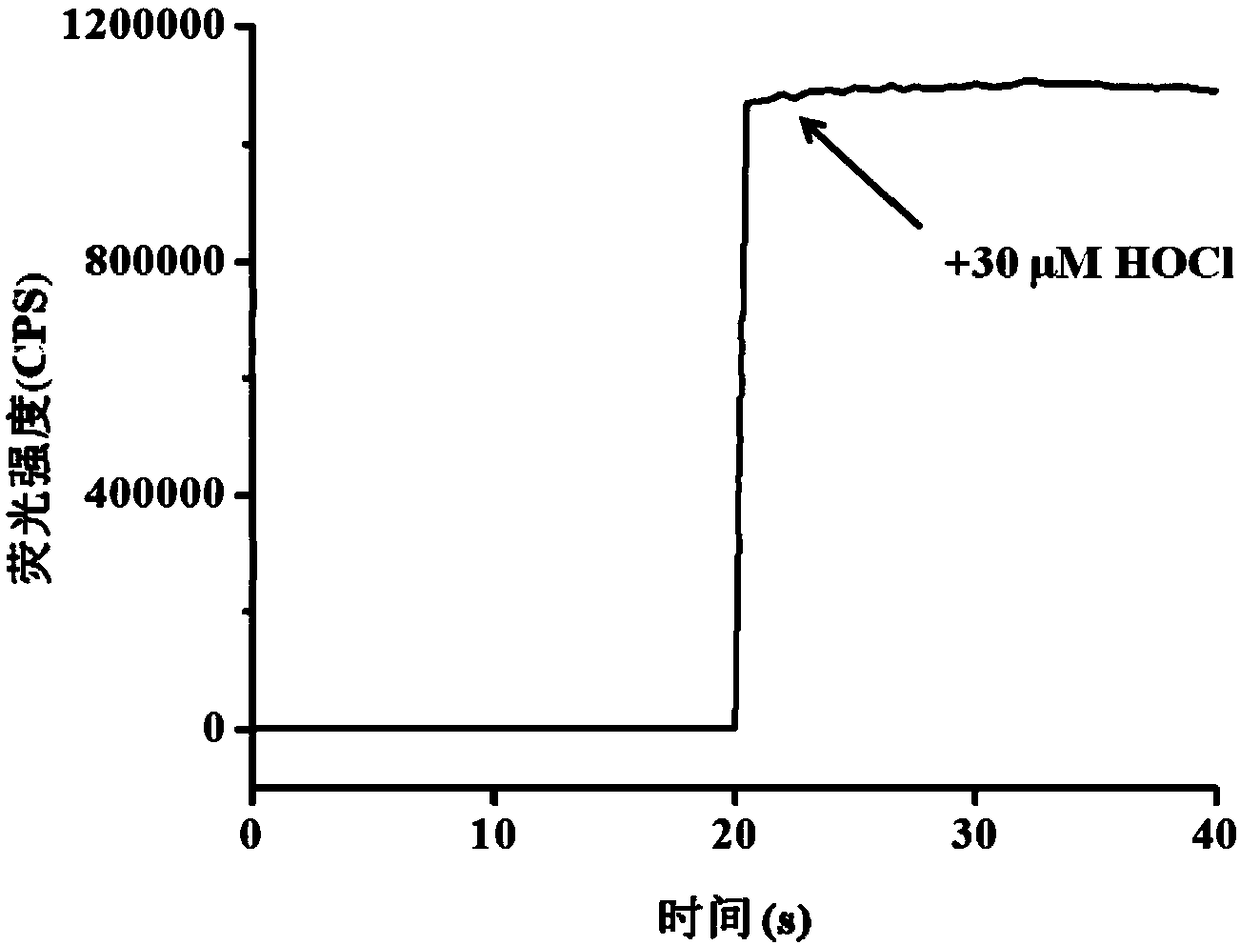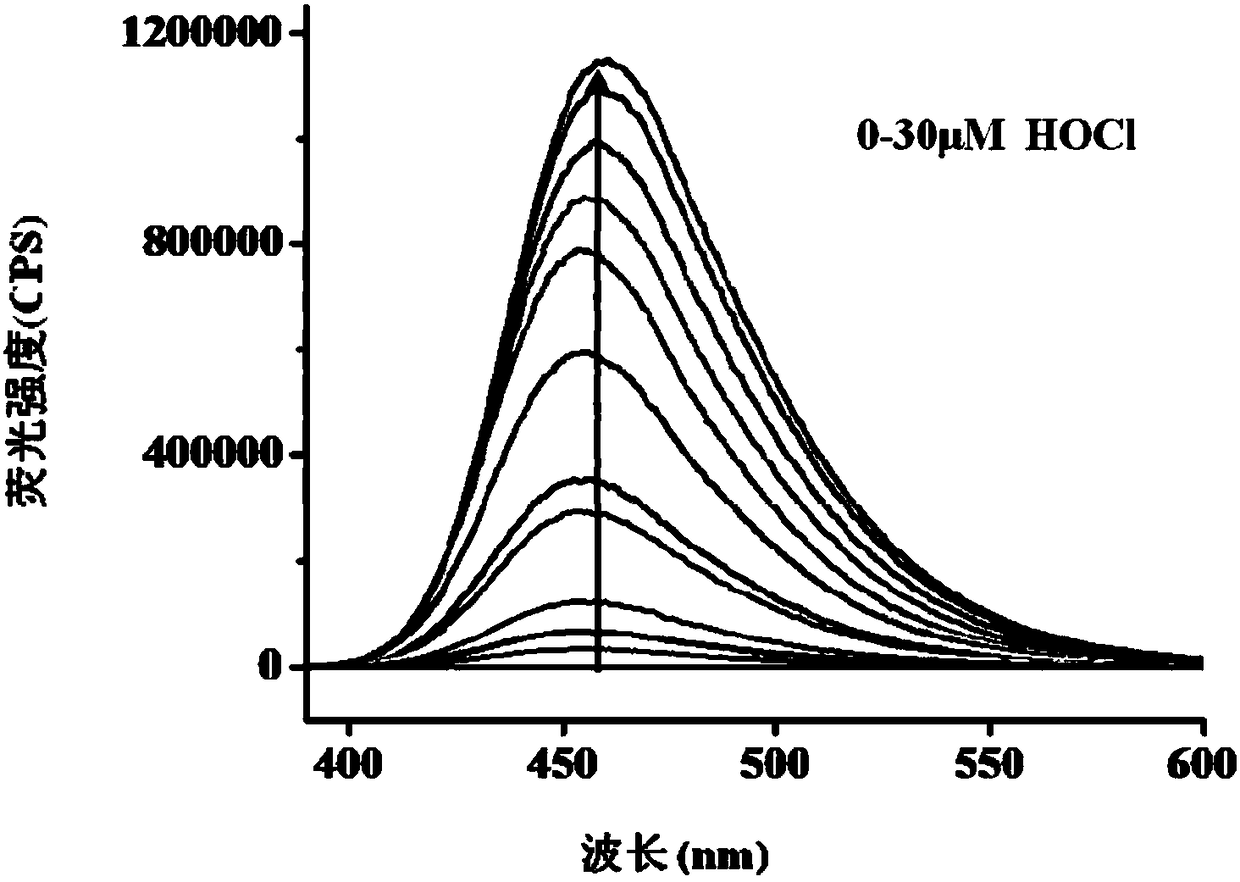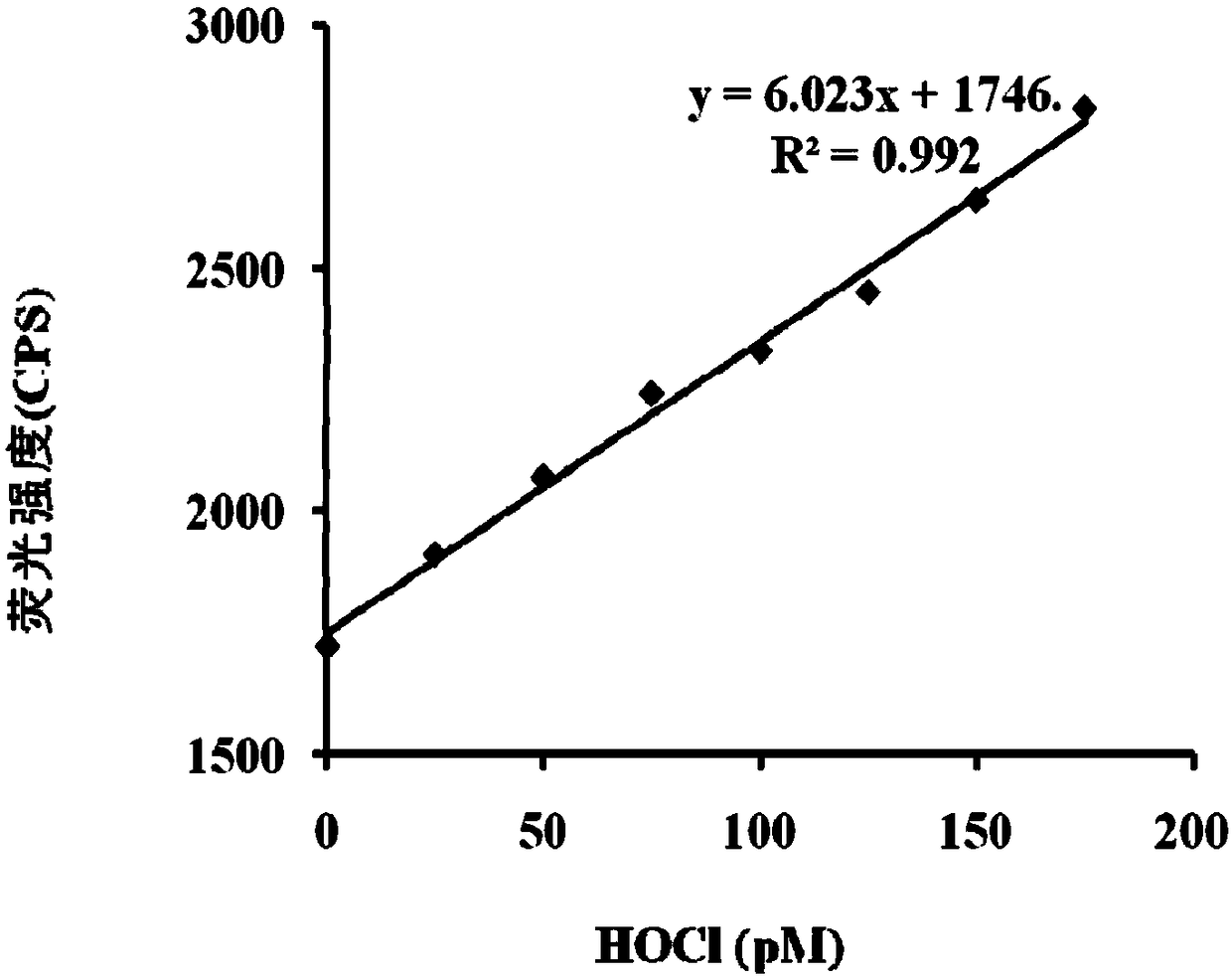Probe for ultra-sensitively and high-selectively detecting hypochlorous acid
A technology of sulfonic acid groups and compounds, which is applied in the field of probes for ultrasensitive and highly selective detection of hypochlorous acid, can solve the problems of complex synthesis, poor selectivity, and low sensitivity, and achieve simple synthesis, good stability, and low cost. Effect
- Summary
- Abstract
- Description
- Claims
- Application Information
AI Technical Summary
Problems solved by technology
Method used
Image
Examples
Embodiment 1
[0035]
[0036] (Scheme 1) Dissolve 324.28mg (2mmol) 7-hydroxycoumarin and 860.32mg (8mmol) dimethylaminothioformyl chloride in dichloromethane and add 1033.92mg (8mmol) DIPEA to stir at room temperature for 20h. The methane system was separated by column chromatography to obtain 305 mg of a yellow solid with a yield of 71.4%.
[0037] (Scheme 2) Dissolve 324.28mg (2mmol) 7-hydroxycoumarin and 1483.2mg (12mmol) dimethylaminothioformyl chloride in dichloromethane and add 1551.6mg (12mmol) DIPEA and stir at room temperature for 20h. The methane system was separated by column chromatography to obtain 320 mg of a yellow solid with a yield of 76.1%.
[0038] (Scheme 3) Dissolve 324.28mg (2mmol) 7-hydroxycoumarin and 1977.6mg (16mmol) dimethylaminothioformyl chloride in dichloromethane and add 2068.8mg (16mmol) DIPEA and stir at room temperature for 20h. The methane system was separated by column chromatography to obtain 350 mg of a yellow solid with a yield of 83.3%.
[0039] ...
Embodiment 2
[0043] Test results of probe (5 μM) response time to HClO (30 μM). The above measurements were carried out in 5mMPBS, pH 7.4 aqueous solution, the probe used was the probe prepared in Example 1, and all spectral tests were measured at 25°C. See results figure 1 .
[0044] from figure 1 It can be seen that after adding 30 μM hypochlorous acid, the fluorescence intensity suddenly increases, and the response can be completed within 5 seconds.
Embodiment 3
[0046] Effects of different concentrations of hypochlorous acid (0-30 μM) on the fluorescence spectrum of the probe (5 μM). The above measurements were carried out in an aqueous solution of 5mM PBS, pH 7.4, the probe used was the probe prepared in Example 1, and all spectral tests were measured at 25°C for 1 min. See results figure 2 with image 3 .
[0047] from image 3 It can be seen that with the increase of the concentration of hypochlorous acid in the probe solution, the fluorescence spectrum is gradually enhanced, and within the concentration range of hypochlorous acid of 0-175pM, the concentration of hypochlorous acid and the fluorescence intensity show a linear relationship, and the detected The limit is as low as 17pM. Therefore, the probe of the present invention can more accurately determine the content of hypochlorous acid in the sample to be tested.
PUM
 Login to View More
Login to View More Abstract
Description
Claims
Application Information
 Login to View More
Login to View More - R&D
- Intellectual Property
- Life Sciences
- Materials
- Tech Scout
- Unparalleled Data Quality
- Higher Quality Content
- 60% Fewer Hallucinations
Browse by: Latest US Patents, China's latest patents, Technical Efficacy Thesaurus, Application Domain, Technology Topic, Popular Technical Reports.
© 2025 PatSnap. All rights reserved.Legal|Privacy policy|Modern Slavery Act Transparency Statement|Sitemap|About US| Contact US: help@patsnap.com



